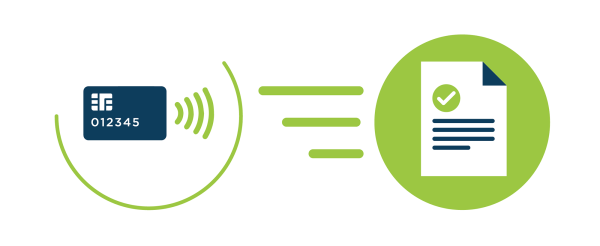As global adoption of contactless technology increases, EMVCo supports the delivery of multiple forms of seamless and secure contactless payments for businesses and consumers worldwide.
Contactless payments, made by waving or tapping a card (or other device, e.g. smartphone, wearable, etc) on a payment terminal, are gaining traction globally. Transaction values are projected to reach nearly $6 trillion by 2024, up from $2 trillion in 2020[1]. As more businesses and consumers recognise the convenience of contactless payments, and with increasing usage during the Covid-19 pandemic, the underlying technology infrastructure is critical to delivering a reliable and trusted payment experience.
Seamless and Secure Contactless Acceptance
EMVCo plays a key role in enabling the seamless and secure acceptance of contactless payments by providing a consistent framework for developing and implementing card-based[2] contactless payment products that will work within a global infrastructure, regardless of where the payments are made or received. This includes:
- Specifications: EMV® Contactless Specifications provide requirements for contactless acceptance devices (e.g. terminals) and EMV payment devices (e.g. card, smartphone, wearable), and the communication protocols between them. They help enable card-based contactless payment products to work together effortlessly and securely worldwide.
- Functional and Level 3 Testing: EMV functional testing and approval processes assess the compliance of contactless acceptance and payment devices with the EMV Specifications prior to deployment. This helps provide assurance to payments stakeholders that these products meet EMV Specifications and will function as expected.
Additionally, as part of its Level 3 (L3) Testing Programme, EMVCo evaluates and qualifies tools used for the integration of the payment terminal with a merchant or bank environment to ensure it enables seamless transaction acceptance and meets the specific requirements of the individual payment systems.
- Security Guidelines and Evaluation: EMVCo provides security guidelines for EMV payment devices used to make contactless payments. For Software-Based Payment Products, EMVCo also manages an evaluation programme for vendors to have their products evaluated. These products are listed on the EMVCo website as a trusted resource for payment stakeholders involved in implementing contactless payments.
- Marks Management: EMVCo defines and maintains the contactless symbol, which provides a trusted, easy-to recognise visual to promote consumer familiarity and confidence when making contactless payments.
Learn more about the EMV Specifications and supporting programmes that support the delivery of seamless and secure contactless payments for businesses and consumers worldwide.
Achieving Best Practice
EMVCo also supports industry adoption of contactless payment technology with EMV Best Practices for Contactless Acceptance at Point of Sale. Used alongside the EMV Specifications, these provide guidance on the design, integration, and installation of devices (e.g. terminal, reader, PIN pad) used by merchants to accept contactless payments in-store.
The EMV Best Practices for Contactless Acceptance at Point of Sale are designed for use by product providers to ease contactless acceptance device development and integration into a merchant point of sale environment and ensure efficient communication during a transaction. The resources also provides guidance to support acquirers and merchants in deployment and installation of these devices.
[1] Juniper Research, ‘Contactless Payments: Market Status, Vendor Analysis & Market Forecasts 2020-2024’, February 2020
[2] Card-based refers to Primary Account Number (PAN)-based payments.



